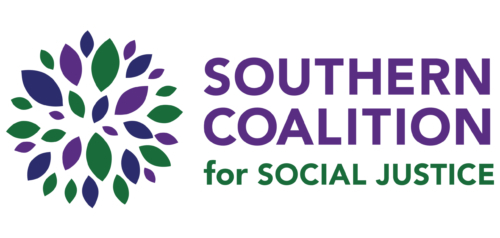If advocates, policymakers, and lawmakers hope to plug the school-to-prison pipeline they must embrace policies and programs that are anti-bullying rather than anti-bully.
Communities often rightly rush to the side of the victims of bullying, but what of the students who bully? They are not nameless monsters deserving of demonization. Beliefs that students who bully are different and must be punished rather than counseled and rehabilitated are unproductive and result in harsh, ineffective policies targeting children rather than behavior.

Many anti-bullying policies come from a zero-tolerance tradition that sees some kids as “bad apples” that must be removed from the bushel. The widespread and growing trends of suspending and criminalizing students who bully follow the same misguided logic: bullies committed an infraction or a crime, and therefore, are bad and deserving of a punishment. This line of thought is neglectful of kids who bully and sends them outside of the school gates without a care for their well-being, leaving potential mental health issues and problems at the home unaddressed.
While intended to protect victims, harsh discipline policies have instead failed to prevent future bullying, bred mental health problems, truancy, and academic difficulties and fed students into the school-to-prison pipeline. According to the Advancement Project, as of 2012, 57% of the 42 states that have anti-bully laws rely solely on punitive measures and completely omit supportive and remedial interventions. North Carolina’s bullying statute, for instance, requires schools to punish students who bully while failing to mention how schools should support them. Of the 40 states that provide model bullying policies, 16 refer only to punitive measures while 60% of the other states rely “excessively” on such measures. Moreover, over one-half of school districts in a Department of Education study outline procedures for reporting bullying to law enforcement and 8 states have gone so far as to make new crimes or modify current crimes to include bullying.
Schools’ and districts’ reliance on punitive discipline and, at times, police officers, creates hostile school environments that influence all students and have cascade effects on staff, academic achievement, and graduation rates. Thus, even if zero-tolerance policies and criminalization efforts that feed the school-to-prison pipeline helped some victims of bullying, it does not mean they are the best way to address the problem due to their numerous drawbacks.
In short, schools, school districts, state boards of education, state legislatures, and Congress should move away from harsh zero-tolerance anti-bullying policies and other forms of criminalization. There are alternatives that could be adopted and changes that could be made to existing policy and law that would provide a safer, more compassionate educational environment for kids who bully and kids who are bullied, while not feeding the school-to-prison pipeline.
First, schools and school districts should broadly rethink how they address bullying within the context of zero-tolerance and criminalization frameworks. Instead of reactive punishment, they should provide proactive interventions such as simple cognitive behavioral therapy starting with young children. Teaching children that an adult is willing to help them work through anger, anxiety, depression, etc., might be more effective than kicking students who bully out of school. This type of therapy, formal and informal, can be incorporated into programs such as Bullying Prevention in Positive Behavior and Positive Behavioral Intervention and Supports (PBIS). In order for these policy and programmatic changes to occur, schools, districts, and legislatures will have to shift funding away from cops and toward counselors, psychologists, and PBIS specialists.
In addition to local policy changes, the Department of Education and Department of Justice can issue model policies that discourage suspension for bullying, except for extreme circumstances, and curtail the role of police officers in bullying prevention and response. Congress and state legislatures can provide seed money for districts seeking to create alternatives to zero-tolerance. States and local school boards can repeal reactionary laws that criminalize students who bully and pass legislation requiring districts to institute programs that proactively target behavior that could lead to bullying and rehabilitate after the fact.[1]
Policymakers and lawmakers should change course with regards to anti-bullying zero-tolerance and criminalization; the impulse to help victims is commendable, but the tactics are not. Programs such as those at Needham Youth Services in Massachusetts that invest time and energy into young people by exploring the root causes of behavior are providing an alternative to archaic and ineffective approaches that kick students out of school and lock them up. Bullying is not just a victim’s issue, but also one that deserves to be addressed by entire schools and communities.
[1] For more, see Two Wrongs Don’t Make a Right: Why Zero Tolerance is Not the Solution to Bullying, p. 12-15
Sean Langberg is YJNC’s Program Associate
